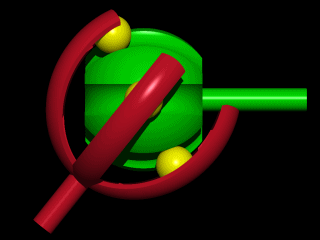Quick toolless Constant Velocity joint check

A quick toolless Constant Velocity joint check. Do you want to check if your constant velocity(CV) joints are going bad? Are you buying a car? Have you been told you have bad CV joints and need to replace them? All of these questions are good reasons to know how to do a quick toolless constant velocity joint check.
What are CV joints?
Do I have CV joints? All front wheel drive cars have 4 CV joints. They are located on each end of the half shafts. All front wheel drive cars have 2 half shafts. CV joints connect the transmission to the drive shaft and the drive shaft to the wheels. The CV joint closest to the transmission is called the inner CV joint. The CV joint at the wheel is called the outer CV joint. In addition to delivering the torque to drive the car forward, they move up and down with the suspension. They also change angles when you are in turns.
Boots are important
Each CV joint uses a special grease. Each CV joint has a rubber/plastic boot. The boot protects the CV joint from dirt and weather and keeps the grease on the CV joint. Clamps keep the boot in place and the contents sealed against dirt and the weather.
If the boot is damaged problems happen. With the CV joint exposed to dirt and the weather the grease spins out and the dirt causes the CV joint to start failing. When the CV joint starts to make clicking sounds when there is a problem. A worn outer CV joint can even come apart making your car undrivable. It is the noise that we will exploit during our quick toolless Constant Velocity joint check.
A Few Words on Safety
The following procedure can be dangerous to the persons attempting the test. Keep a vigilant watch for oncoming traffic. The person outside the car needs to be especially vigilant for oncoming traffic and the vehicle attempting the test.
The CV joint check
To check the CV joints you need quite a large area and a sensible driver. A large empty parking lot or a large cul-de-sac will work. The person who listens will stand in the center of the circle and listen for a clicking sound. The other person(the driver) will lock the steering wheel to the left and place the car in drive. The idle speed of the car is enough to move the car. Roll down the car’s windows you’ll need good communication. Turn off the radio and heater/AC blower we need quiet for this test. As the car moves in a circle the person who is standing outside will listen for a clicking sound from the front wheels. If no clicks are heard after a full circle or two stop the test. Have the driver lock the steering wheel to the right and repeat the test.
The CV joints have not failed(yet) if you hear no sound. A visual inspection of the boots will confirm if they are good. If you hear clicking, bad news you need a half shaft replacement.
Note: The labor costs for a mechanic to replace a one piece boot are almost the same as replacing a half shaft. If you have a hole in one of the boots or a totally worn out CV joint you should replace the half shaft.
If you feel like doing it yourself, here is a good video on replacing a half shaft.
Split Boot Replacement
If you still have a need to replace the boot. Split boot products will let you replace the boot on the car. However, if your CV joint is already clicking it will be a waste of time and money. Here is a video on replacing a CV joint boot with a split boot. It is the simplest to install without special tools or disassembly of the vehicle.

